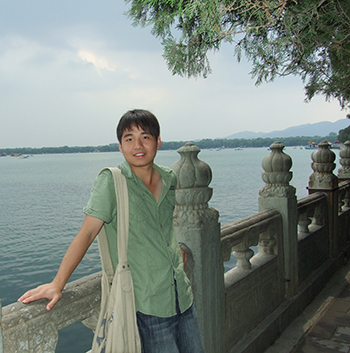Li Li (李礼) (ESR2)
Nationality: Chinese
Main Host Institution: Netherlands Cancer Institute
Academic Background: I majored in biotechnology in Nanjing Agricultural University from 2006 to 2010. During my four-year study, I participated in a lot of courses including phytology, zoology, biochemistry, molecular biology, etc.
After graduation, I spent another three years pursuing my master degree in Beijing Normal University. In my graduate study, I focused mainly on anti-cancer drug CNB.
I decided to go abroad for better study and research after master. And I started my fantastic research in Reuven Agami’s lab as a PhD student since 1 October 2013.
Project title: The role of LincRNAs in the senescence induced by RAS
Project background: Non-coding RNAs (ncRNAs) are functional molecules without a coding potential. As ncRNAs form a large proportion of our genome, they have the potential to explain many fundamental biological phenomena. One subset of ncRNAs is enhancer RNA (eRNA), which are produced from enhancer domains and control neighbouring-genes expression. Another class of ncRNAs is the large intergenic ncRNAs (lincRNAs), which was shown to influence the expression of genes through chromatin modulation.
We used in the past primary human BJ fibroblasts expressing modified hTERT and oncogenic H-RasV12 as a system to identify novel tumour suppressor genes required for p53-dependent oncogene-induced senescence and block of tumorigenesis. Now, we will use this system to identify tumor suppressor lincRNA involved in gene regulation. We will screen an RNAi library against selected lincRNA whose expression was up or down regulated during senescence induction and tumorigenesis. Hits that show either accelerated, or bypass of senescence, or induced transformation, will be investigated in great detail. Last, we will correlate the identified lincRNAs with cancer progression using patient samples. We expect to identify novel tumor suppressor and oncogenic lincRNAs that can be further utilized for cancer therapy.
Project Aim:
(1) To quantify and monitor the transcriptional dynamics of lincRNAs in model systems relating to senescence and tumorigenesis.
(2) To functionally identify and characterize lincRNAs acting to bypass senescence and induce tumorigenesis.
(3) To describe and characterize biological networks encompassing lincRNAs and their interactions with other transcripts, proteins and chromatin structures.
(4) To characterize modalities and mechanisms for lincRNA:RNA, lincRNA:protein and lincRNA:chromatin interactions.
Expected outcome: We expect that I can find at least one LincRNA which can rescue the senescence induced by RAS and then I will clarify the mechanism for that.

